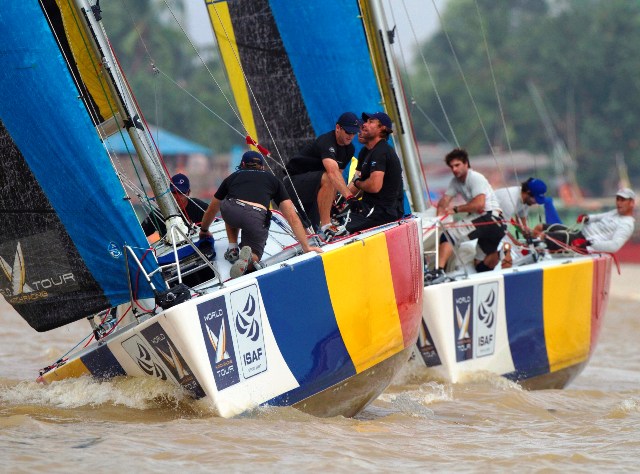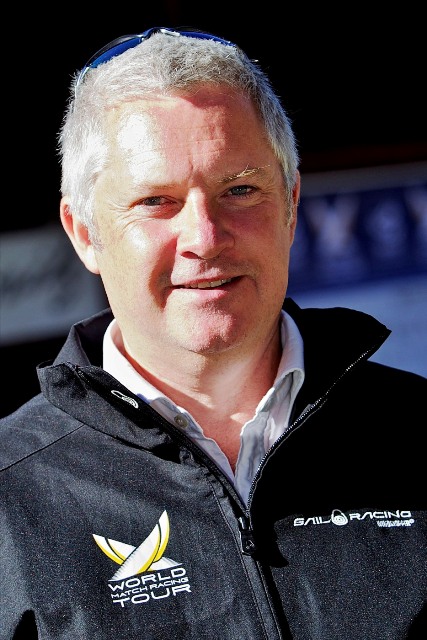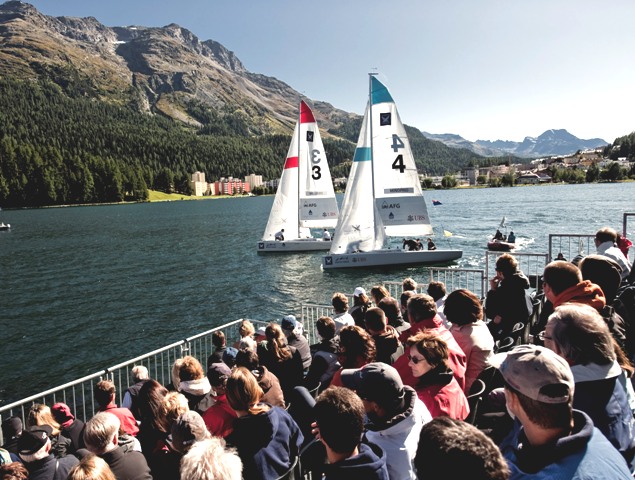
Taking the fight to the water: match racing in full flow is a red-blooded pursuit
Taking sailing around the world
The World Match Racing Tour presents itself as the world championship of sailing, bringing big events, big names and big money to marinas around the globe. The Leisure Review reports on the tour’s new strategy.

Taking the fight to the water: match racing in full flow is a red-blooded pursuit
Sailing is not generally bracketed with motor sport in the popular sporting imagination but at the recent press conference called to announce a new strategy for the future of the World Match Racing Tour it became hard not to notice the echoes of Formula One. First there was the environment, a central London members’ club with a carefully lit stage set and state-of-the-art conferencing technology. Then there was the highly polished presentations, which had sport as their subject but were dominated by talk of increased profile, sponsorship packages and marketing rights holders. The audience was appropriate, containing a mix of old-school blazers and cutting-edge sportswear, but giving the game away completely was the presence of Jake Humphrey, the face of BBC Sport’s Formula One coverage, taking to the stage as the WMRT’s master of ceremonies.
Such references to the world of tarmac and high-octane combustion are not as tenuous as they might first appear. In 2001, after 30 years of running the series in various formats, the World Match Racing Tour restructured its management operation by adopting a similar business structure to that of Formula One. In this model there is an organisation that holds the rights to promote the tour and invites venues around the world to bid for the right to host one of the races in the series. Successful bidders are then able, with the assistance and encouragement of the central rights holder, to bring in sponsors and spectators to generate revenue that makes the whole venture financially viable. A significant prize fund attracts the biggest names in the sport, generating interest and aspiration among those looking to compete at the highest level. Throw in the whiff of ozone or petrol as appropriate, the glamour that goes with exotic locations and you have an international tour that defines its sport.
While one might have inferred most of this from the presentations, the press conference had actually been called to announce an expanded and restructured prize fund, a new bidding process for host cities and new specifications for the boats used in the tour. However, as with most press conferences the story of most interest was not the one at the top of the press release. The real story of this event lay not so much in what the WMRT was going to be doing but rather in what it had decided it was not going to do; and what the WMRT would not be doing, it transpired, is following the America’s Cup into multi-hull boats.
The significance of the decision to take the America’s Cup into catamarans had been explained to The Leisure Review by the WMRT chief executive, Jim O’Toole, a few weeks before the WMRT’s Humphrey-hosted press conference and only a few weeks after the America’s Cup news had broken. “The America’s Cup is going to cats [catamarans],” he said. “Up to this point the America’s Cup has been the pinnacle of match racing. Their aim is to have the best sailors racing the fastest boats. But it costs a minimum of $120 million to enter the competition. This means that they have taken themselves out of monohull match racing, which leaves the World Match Racing Tour at the pinnacle of the sport. Our business model is that each venue provides identical boats to be used by all of the teams competing at that event. This means that it is all about the skippers’ abilities, about their skills as sailors, and that makes for an incredibly exciting competition.”
Jim’s explanation came with a beginner’s guide to the concept of match racing. The essence of match race sailing is that two boats compete head to head around a fixed out-and-back course with the first across the line winning the race. In the case of the WMRT each five-day event comprises some 75 match races with 12 teams competing in a round-robin format to reach the semi-finals and, of course, the finals. The head-to-head nature of the races means that competition is focused and fierce with an emphasis on boat-handling skills and out-thinking your opponent. Often the race can be won or lost before the boats have even crossed the start line as they jostle for the best position and an advantage that could put them out ahead.
“The key to this game is about stealing space and wind,” Jim explained. “That’s the absolute essence of it. It’s all about manipulation and getting into the other guy’s head.” In the heat of competition on the water boats collide, passions are raised and penalties (taken by a penalised boat having to make an immediate 360-degree manoeuvre) are vociferously claimed and exacted. As the reigning WMRT champion, Adam Minoprio, put it, “We view match racing very much as a boxing match on the water.” All this makes for excitement, tension and high drama. While it may not be a competition for the fastest boats – WMRT is happy to cede that to the America’s Cup – the tour is confident that it is able to provide a competition that serves as a showcase for the best skippers and the most skilful crews.
It has also become a lucrative opportunity. Although not quite in the same league as Formula One or professional football, the nine events of the WMRT, which includes the season finale, the Monsoon Cup in Malaysia, offer a total prize fund of $1.5 million, a figure that is rising to $1.75 million in 2011. Skippers put their crews together, sort out their own sponsorship deals for their teams and compete for their share of the pot over the course of the tour. Managing a team, managing the finance and handling the media puts enormous pressure on the skippers but the WMRT has created a business model that has attracted some of the world’s best sailing talent, including British Olympian Ben Ainslie. This allows the WMRT to pursue what Jim O’Toole referred to as “a hero strategy”, focusing on young skippers as the leading lights of the sport that can build interest among an audience, among sponsors and among young people who might like to try their hand at sailing. “This is a very mature sport,” he said. “There is huge pressure on the skippers but these sailors are professional with a capital ‘P’. They have a highly professional attitude, they are articulate, motivated and intelligent. And they are very good with the media.”
The priorities for the future, according to Jim, include a focus on creating a “broader and deeper media footprint” for the series, allowing spectators to watch the racing close up, courtesy of on-board camera and telemetry, and allowing them to watch in whichever format they find convenient, whether that be live, on television or online. The WMRT strategy also looks to an increase in the number of events to 15 over the next three years, an ambition that involves highly complex negotiations involving host venues, sponsors and frequently the regional and national government structures of the host locations. Another important aspect will be developing the sponsorship packages to ensure that the revenue continues to flow.
This need for sponsorship, a factor common to so many professional sports competitions, will no doubt shape the future of the tour. In recent years the series – again, in common with so many sports – fell foul of the ban on tobacco sponsorship and the company holding the rights to WMRT was bought by a Malaysian property developer, who also owns the rights to the WMRT final event, the Monsoon Cup. Expressions of interest are currently being sought from potential sponsors from among the betting companies that dominate sports sponsorship in the current market.
It remains to be seen whether the Monsoon Cup, which takes place between 30 November and 5 December, will be the occasion for the announcement of a major headline sponsorship deal for the tour and whether the ambitions for expansion will prove viable in the context of a global economic recession. What one can predict with some confidence is that the event will produce plenty of exciting, incident-packed racing that may well prove rather more fascinating than watching Formula One cars go round in circles.
The Leisure Review, November 2010
© Copyright of all material on this site is retained by The Leisure Review or the individual contributors where stated. Contact The Leisure Review for details.
Download a pdf version of this article for printing

Photo credits:
Top: WMRT
Centre: Ian Roman/WMRT
Bottom: Brendon O'Hagan/Subzero Images
